(Things to do When I Retire, Again)
By: Marsha Stephens

Having been bitten by the state meeting bug in 2023, I eagerly got lined up to sign up as soon as the portal opened for registration for the 2024 meetings. And the adventure began immediately, when I (along with hundreds of others) was unable to participate in the registration tidal wave due to some mysterious technical problem. According to what I last heard, it was something like a denial of service issue that arose when the Mongol horde of TMNs all logged in simultaneously to register. Really? What else could be expected? Fortunately, I had shared my planned session and trip selections with the group of friends I was staying with, and one of them was able to register for me, so it all ended well. With next year’s meeting planned for the site of one of my alma maters (College Station), I can already see the potential for a real Aggie-style experience, but I’m keeping an optimistic outlook.
The 2024 meetings offered a huge diversity of learning experiences and several of the presentations provided nuggets of valuable information. One of special interest was “Adopt-A-Loop Project Overview” presented by Shelly Plante of TPWD. I recently assisted a friend in the Cradle of Texas chapter with site visits for one of the Great Texas Wildlife Trails that her chapter has adopted. This program is actively seeking TMN chapter partners to help update and maintain relevant information (like bird species sightings) for the sites along the Trails throughout the state. Chapter adoption of a Trail requires designation of a Coordinator and recruitment of volunteers to participate in visiting the Trail sites on a quarterly basis to document status and natural resource features present, which is all done via an iNaturalist project group and a special TPWD database where data are entered. After returning home, I investigated and discovered that there is a Trail in our region that includes a number of sites in Palo Pinto County as well as Jack and Young counties. And now that documentation resides in my stack of future projects to pursue when I retire, again.
Another presentation that proved to be quite surprising was presented by Monika Maeckle, who has recently published the book “The Monarch Butterfly Migration – Rise and Fall”. Monika is a conservation leader in San Antonio and active journalist with a long history of involvement in pollinator issues. The talk began with a survey of the history of research and traditional understanding of monarch status and trends in North America, which is all familiar to most naturalists who have been “following monarchs”. The surprise part began with information about the newest discoveries that document previously unknown wintering refugia sites, outside those that have long been known in the states of Mexico and Michoacan, Mexico. This was followed by a discussion about some scientists working closely with the species, that have proposed that the apparent decline in numbers at wintering sites in Mexico may actually represent a change in migration patterns that could eventually eliminate the use of the far-southern overwintering refugia, possibly related to climate change. All of this was quite a different perspective from the “doom-and-gloom” story that we have heard for so many years. So Monika’s book is also on my stack of things to read when I retire, again.
A really valuable learning opportunity was a presentation on the 2025 State Wildlife Action Plan (SWAP) for Texas, which is under review for revision. The SWAP is a document that is congressionally-mandated and that provides a roadmap for TPWD research, restoration, management, and recovery projects focused on identifying and conserving Species of Greatest Conservation Need (SGCN) and their habitats. Under guidance by U.S. Fish & Wildlife Service, the first SWAPs were adopted in 2005 nationwide and are revised every 10 years. In essence, the SWAP serves as the basis for determining where funding and effort will go for conservation efforts to improve target species’ status, to prevent population declines that could lead to listing under the Endangered Species Act. TPWD is currently seeking feedback to improve content and presentation of the 2025 SWAP, and that opportunity is available as a survey at the following URL: https://www.txwildlifealliance.org/action-for-wildlife/state-wildlife-action-plan
The survey takes about 15 minutes and provides a preview of the Conservation Opportunity Area Map that will be part of the newest SWAP, as well as an invitation to participate in a workshop evaluating usage of the map. The most recent version of the SWAP is available at https://tpwd.texas.gov/wildlife/wildlife-diversity/swap/#:~:text=The%20State%20Wildlife%20Action%20Plan%20%28SWAP%29%20purpose%20is,of%20Greatest%20Conservation%20Need%20%28SGCN%29%20and%20important%20habitats
I am proud to report that unlike the case with other things I learned and plan to pursue after I retire, again, I have dutifully followed up on this subject and completed the survey, as well as downloading a copy of the SWAP for reference use in presentations. It is a very interesting and informative document, which I was able to share with students in my fall wildlife class, who promptly began asking if this would be on the exam. Sigh.
Registration for the 2025 State Meeting will be here before you know it, and given past experience, it is worthwhile getting it on your calendar. It is 4 days jam-packed with learning and adventure and socializing with a bunch of nature nerds. The field trips (which I did not describe because I tried to control myself) are always a priceless opportunity to see places and things that are generally not accessible, or have limited access for the public with the people who are most knowledgeable about them as guides. Come on y’all, let’s all go to College Station in October! Maybe there will even be a fieldtrip to the site of a certain historic poultry operation in La Grange.


